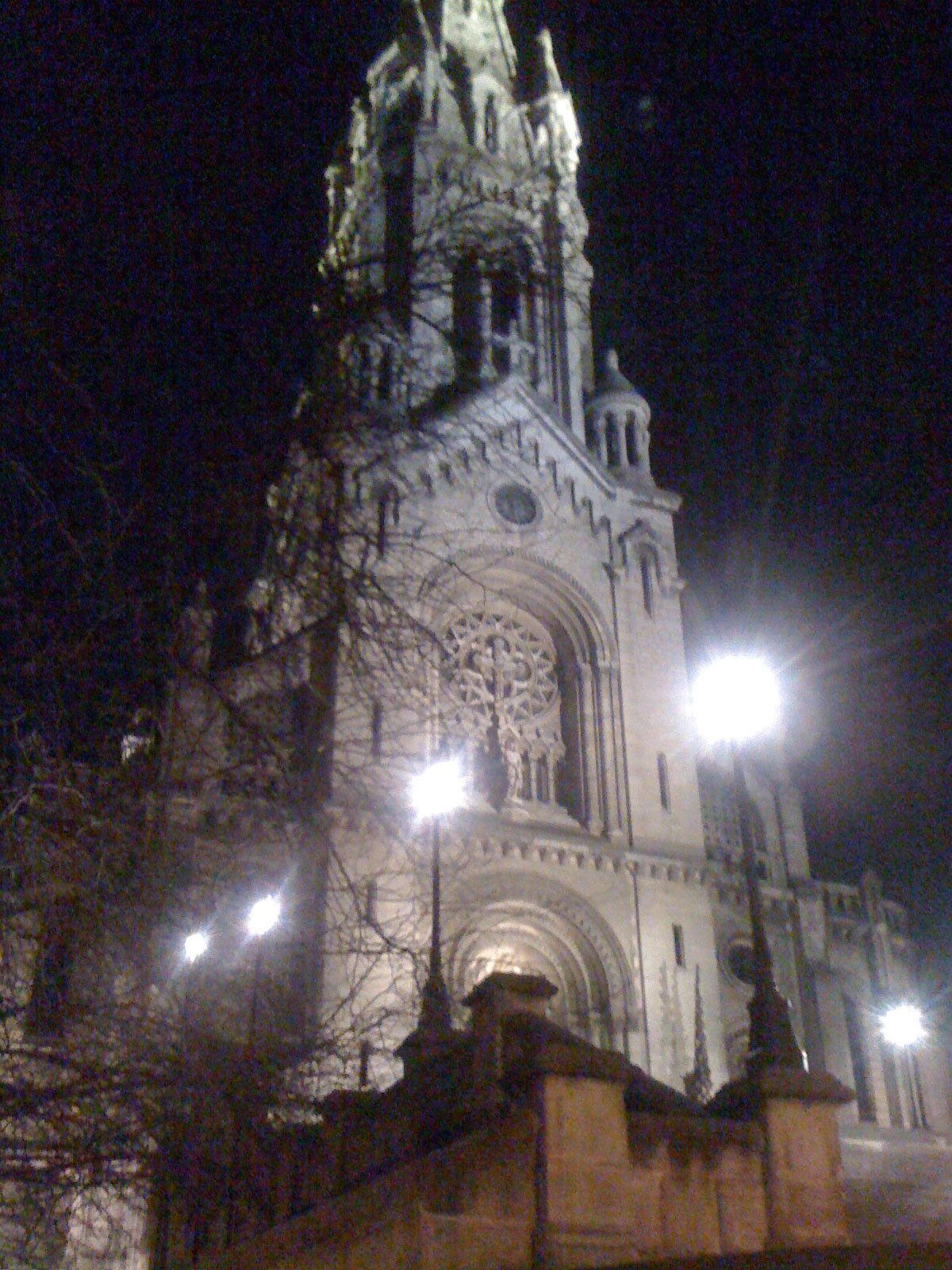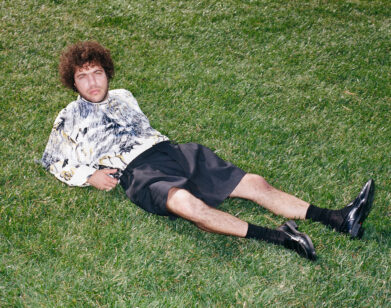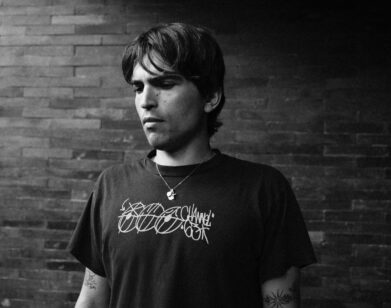The Church of Julianna Barwick

JULIANNA BARWICK. PHOTO COURTESY OF JODY ROGAC
Shortly after our early-morning talk with Julianna Barwick, she sent an album of photos our way. The pictures tell of a trip she took to France this past March. Included among the shots of kindly friends, fathers, and bistros are several striking snaps of the Notre-Dame-de-la-Croix, a neo-Gothic cathedral built in the last half of the 19th century. Against all technological odds, the structure’s mannered beauty has overwhelmed the sharpness of the digital image. The church’s literal glow appears to reach beyond the jpeg’s border.
The effect is not unlike that of Barwick’s own stately edifice, The Magic Place, the debut album she issued earlier this year on Asthmatic Kitty. Proved by the album’s nine songs, Barwick has refined the highly intuitive process she stumbled upon five years ago, when she started looping her voice through an effects pedal originally designed for guitar. Her songs are composed primarily through vocal improvisations she records to a laptop. Though the input is often as simple as a four-bar melody hummed into a loop station, the output can resemble a Gregorian chant. Barwick’s moxie is the essence of her art, with the profane forever willing itself toward the sacred.
ANDREW STOUT: Since your own music is so unique, I wonder what draws you, as a listener, to someone else’s music.
JULIANNA BARWICK: The first thing that comes to mind is a uniqueness and a singularity. And just that feeling of, like, “Whoa, I’ve never heard anything like this. What is it?” You know? I’ll listen to everything that person has done. And, obviously, I’m a sucker for beautiful vocals—people doing unique things with their voice. I love piano, I love a good dance-y song. My most recent obsession was the new John Maus song, “Believer,” I don’t know if you’ve heard it.
STOUT: I haven’t heard it. Which maybe makes it a good example to use here. Explain to me what you heard in that song initially that pulled you in?
BARWICK: It’s got a really beautiful chord progression. It’s really emotional. I can’t really understand what he’s saying. But his singing is so intense. He really punctuates everything.
ÉGLISE NOTRE-DAME-DE-LA-CROIX. PHOTO COURTESY OF JULIANNA BARWICK
STOUT: I know you get a lot of process-oriented questions, and that might drive you mad, because you work so intuitively. So let me ask something really practical about the way you work: How long does it take, generally speaking, for you to compose a song—are we talking hours, days, years? What’s the typical timescale for you?
BARWICK: Depending on the song, it can be any one of those. Because I save everything I record as .wav files, I have this gigantic folder filled with audio files I’ve made over the years. So I can build songs from parts I recorded years ago. Like “Bob in Your Gait” from The Magic Place: the opening guitar line was something I’ve had for several years. And I decided it was finally time to do something with it.
STOUT: The big folder of .wav files you mention reminds me of a writer who keeps a notebook filled with notes and fragments and ideas.
BARWICK: Yeah! Actually, I have the new CD right here. You know, for a bunch of these songs, I had an element of it floating around for awhile. With many of these songs—”White Flag”, say—I had the first vocal part [sings the opening vocal riff], you know? I had that part for a while. Then I built everything on top of that. So my folder is like a sketchbook.
STOUT: Now, I compared your process to a notebook and you just mentioned a sketchbook, which gives me the impression that, creatively speaking, you’re more visually inclined. Am I wrong about that?
BARWICK: No, not at all. I have a degree in photography. So I love photography and drawing. I sort of lament the fact that I don’t draw as much as I’d like to. I need to get a sketchpad.
STOUT: What compels you to take a photograph of something?
BARWICK: The composition. For instance, this tree hanging down in front of my window here. The red in the leaves matches the sweater of that person over there—that’s going to look cool in a photo.
STOUT: And what about drawing? What do you like to draw?
BARWICK: I love to draw people. In college, 90 percent of my work was portraits. Something that’s kind of struck me about this, is when I’m taking a portrait of someone or when I’m drawing, I like it to be as close to real as possible. I try to draw the perfect portrait. I’m into that. I’m not very loose with my lines, you know. I’m not making cool abstract paintings. I love to take a perfect-looking photograph of someone with natural light.
STOUT: So the record’s been out a few months. It’s gotten a great response. You’re playing a lot of shows. What’s the most fun part of this time in your life?
BARWICK: Travel, I’d have to say. I’m leaving in a little over a week and I’m visiting Amsterdam, Scotland, Ireland, Manchester—you know, I’m going to play on a beach in Italy with Toro y Moi – I’m going to Turkey. It blows my mind. My boyfriend’s going to join me for a week and we’re going to be in France and Switzerland together and see all these amazing things and learn about the history of these places. I mean, I get to do all of these things, and in exchange I just play a show somewhere? I’m like, “I can do that!”
JULIANNA BARWICK WILL TOUR THROUGHOUT THE SUMMER, INCLUDING A DATE TOMORROW AT GLASSLANDS GALLERY IN BROOKLYN. FOR MORE ON BARWICK, VISIT HER MYSPACE.






